This month we provide an update on the Hôpital de la Miséricorde and analyze controversial plans by Hydro-Québec to integrate an electricity substation into the haunted site. The ghost-ridden Hôpital de la Miséricorde has been empty for years and is starting to crumble. Located on prime real estate in Downtown Montreal...
Welcome to the ninety-ninth installment of the Haunted Montreal Blog!
With over 500 documented ghost stories, Montreal is easily the most haunted city in Canada, if not all of North America. Haunted Montreal dedicates itself to researching these paranormal tales, and the Haunted Montreal Blog unveils a newly researched Montreal ghost story on the 13th of every month!
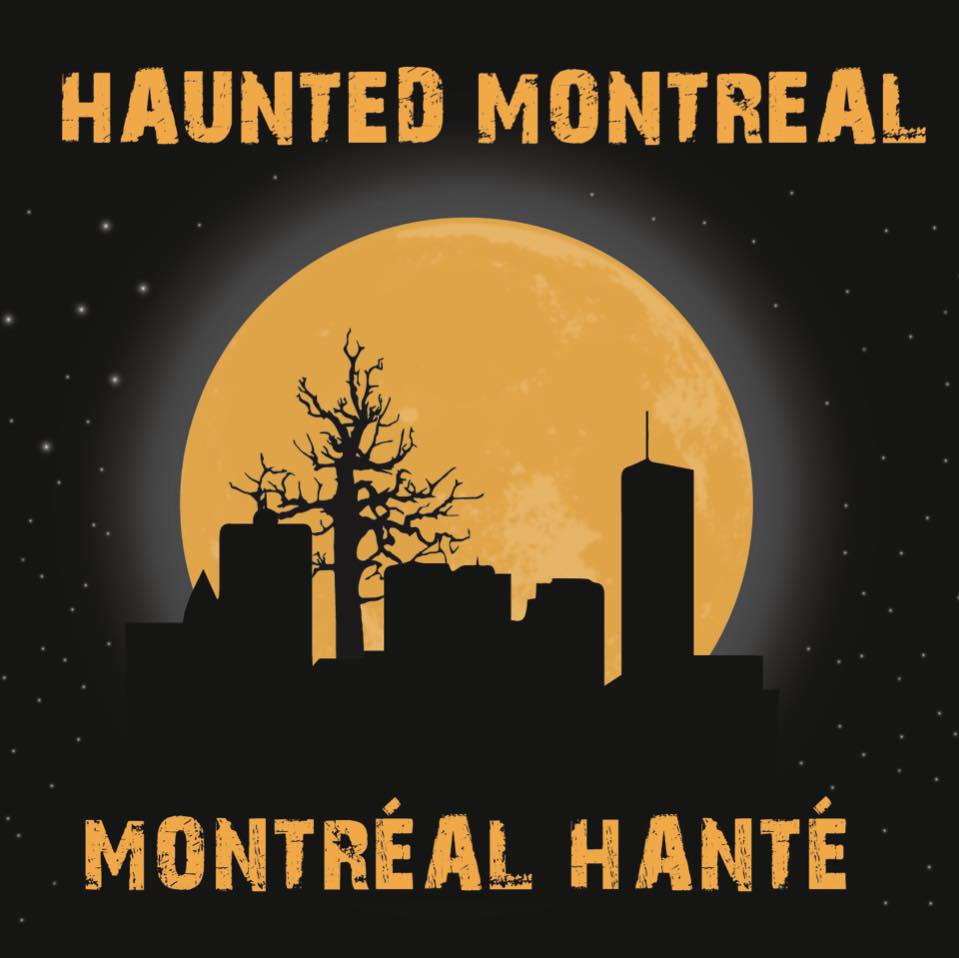
This service is free and you can sign up to our mailing list (top, right-hand corner for desktops and at the bottom for mobile devices) if you wish to receive it every month on the 13th! The blog is published in both English and French!
With Hallowe’en behind us, Haunted Montreal is entering its winter mode, also known as the Dead Season!
Our Haunted Pub Crawl is offered every Sunday at 3 pm in English. For tours in French, these happen on the last Sunday of every month at 4 pm.
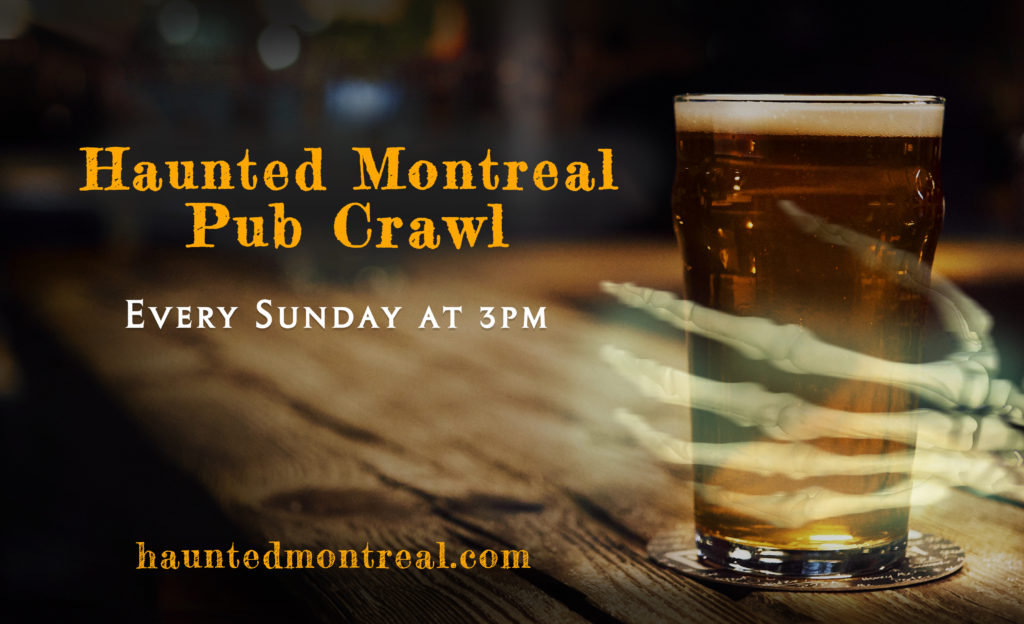
Private tours for all of our experiences (including outdoor tours) can be booked at any time based on the availability of our actors. Clients can request any date, time, language and operating tour. These tours start at $215 for small groups of up to 7 people.
Email info@hauntedmontreal.com to book a private tour!

Lastly, we have an online store for those interested in Haunted Montreal merchandise. More details are below in our Company News section!
This month we examine Saint Louis Square, a beautiful park associated with Quebec’s literary history. However, when the sun goes down, it allegedly attracts ghostly spirits.
Haunted Research
Situated in Montreal’s Plateau-Mont Royal Borough, Saint Louis Square is a beautiful and bucolic park dating from 1876. Surrounded by stunning Victorian architecture, the leafy square is popular with locals and tourists alike. It features a central fountain, busts of famous poets and even a small stone building with a café and ice cream parlor inside.
However, the square also has a turbulent history. Once the stomping ground of many disturbed artists, the Montreal Hippy Movement and an era of decline including rampant prostitution, deranged things have happened in the park and its environs. Unsurprisingly, there have been ghost sightings in Saint Louis Square.
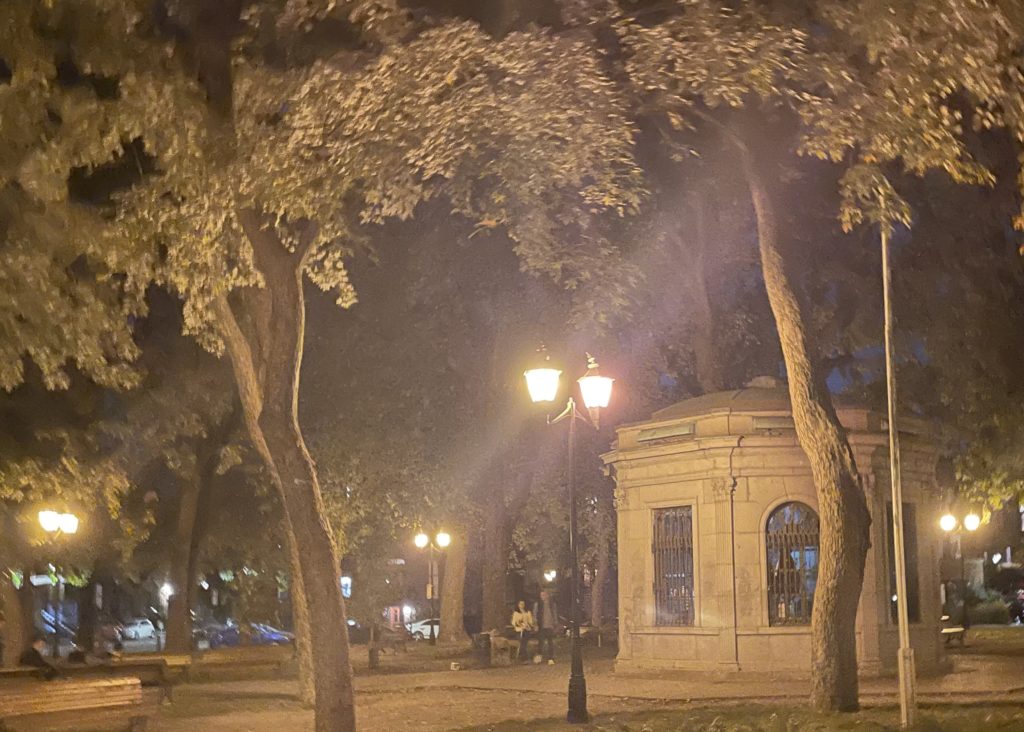
Indeed, some artists claim to have been tormented by enraged specters, ghostly animals, sinister demons and other horrors in the square’s vicinity. Whether this is the work or fevered imaginations or something paranormal, there can be no denying that Saint Louis Square has left its indelible mark on the psyche of so many people over the years.
The most common ghost sighting is that of a tormented man who seems lost and despairing. He paces around the park aimlessly, sometimes pausing to wring his hands or grab his face, as though in a state of anguish. When approached, he vanishes into thin air.
One local resident contacted Haunted Montreal to say: “Sometimes I sit on my balcony at night and wait for him to appear. When he does, which if often, he scares the crap out of those wandering the park after dark.”
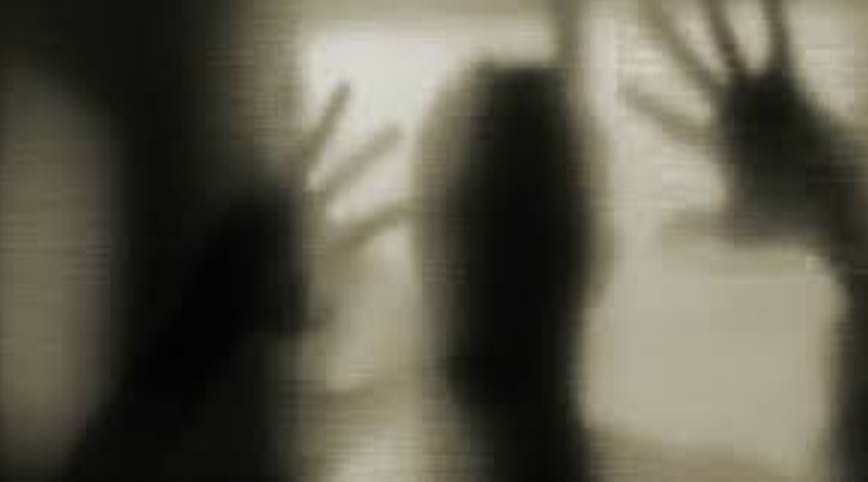
This ghost has been spotted again and again and there are many accounts of him. Who he is and why he roams the square is the subject of much speculation.
Saint Louis Square has a long and fascinating history. In 1849, the City of Montreal constructed its first water reservoir on the site. Known as Réservoir de la Côte-à-Baron or Réservoir Jean-Baptiste, it had a capacity of three million gallons. It was 20 feet deep and was flanked to the east and west by parkland.
However, when a major fire broke out in Montreal in 1852, the reservoir was drained and closed for repairs. Known as the “Great Fire of Montreal”, it burned down half of the city and left as many as 10,000 people homeless.

As a result, a new and larger reservoir was ordered. Located above the McGill campus, the McTavish Reservoir was constructed between 1852 and 1856 with a capacity of 37 million gallons of water. Named after Simon McTavish, Montreal’s most infamous 18th Century ghost, the gigantic pool was intended to serve the needs of local citizens.
With the first reservoir declared obsolete, Saint Louis Square was created in 1876. Named after two famous industrialists, brothers Emmanuel and Jean-Baptiste Saint-Louis, the park proved a popular location with the city’s French-speaking bourgeoisie. In 1880, the reservoir was converted into a swimming area and ice rink in the winter.
Construction of the sumptuous Victorian dwellings that surround the park began in 1885. Architectural styles included Second Empire, neo-Queen Ann and Chateau de Glace.
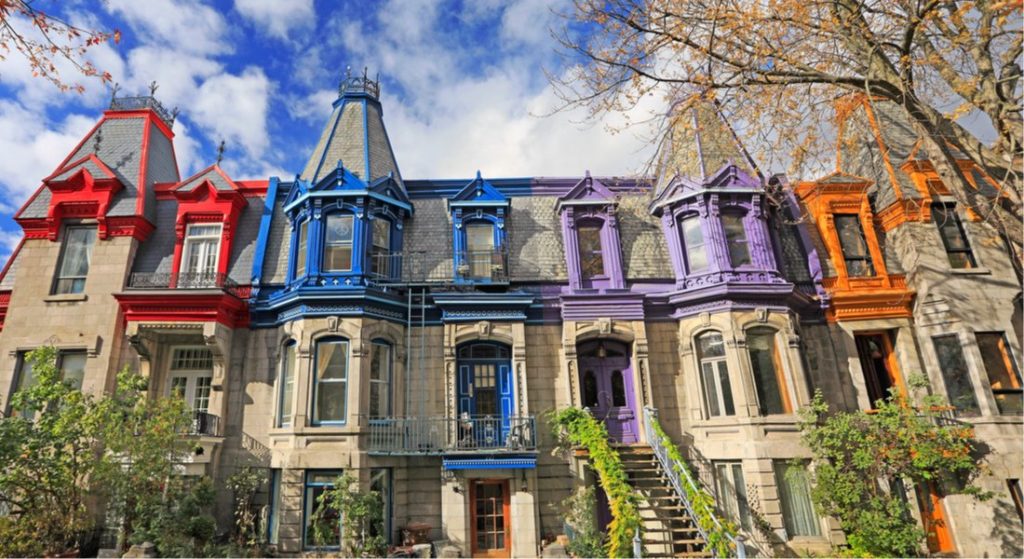
The French-Canadian elite quickly began moving into the now-posh area. In 1894, a three-pronged fountain was added to the old reservoir
To increase the prestige of Saint Louis Square, a bust of famous Quebec poet Octave Crémazie was unveiled on June 24, 1906. Designed by Louis-Philippe Hébert, the monument of the literary hero was a welcome addition. Called “the father of French Canadian poetry”, Crémazie is recognized for his patriotic verse and his important role in the cultural development of Quebec.
In 1931, the magnificent cast iron fountain was installed in the center of the square. It had stood in the eastern portion of Viger Square since 1850, but was relocated when Berri Street was extended.
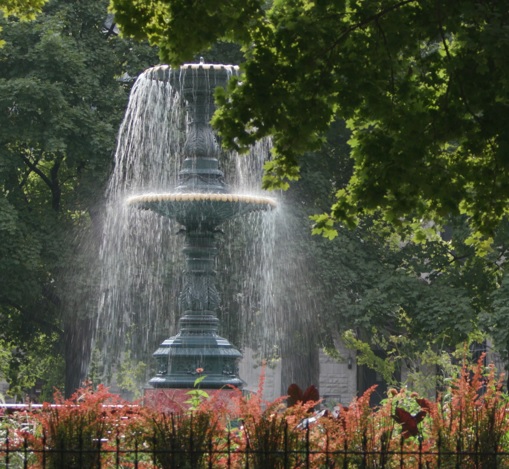
However, in the 1940s and 50s, many of the wealthier residents decided to move to Outremont. This tony neighborhood to the north was growing rapidly and featured more luxurious homes with large gardens. There were also many grandiose parks that dwarfed Saint Louis Square.
By the 1960s, Saint Louis Square had begun falling into decline, despite the addition of an old stone vespasienne (former public toilet). The building was moved from Viger Square during construction of the metro and converted into a café.
Many of the old homes were starting to fall into dilapidation. Most were converted into cheap rooming houses, which attracted all sorts of bohemians and artists. These included French-speaking poets, sculptors, painters, musicians, authors and other creative-types.
For them, Saint Louis Square became an unofficial extension of many artist salons and workshops and the park was often full of creative projects. Artists painted on easels and wrote on benches. Poets recited their latest works and photographers snapped pictures of the remarkable yet neglected square. Paolo Noël’s musical hit Carré Saint Louis put the square on the map of Quebec’s public imaginary.
According to local resident and author, Jean-Jules Richard, in his 1971 book Carré Saint Louis:
“This old, wealthy neighborhood was now invaded by the poor, artists, old-school bohemians and, more recently, beatnicks and hippies.”
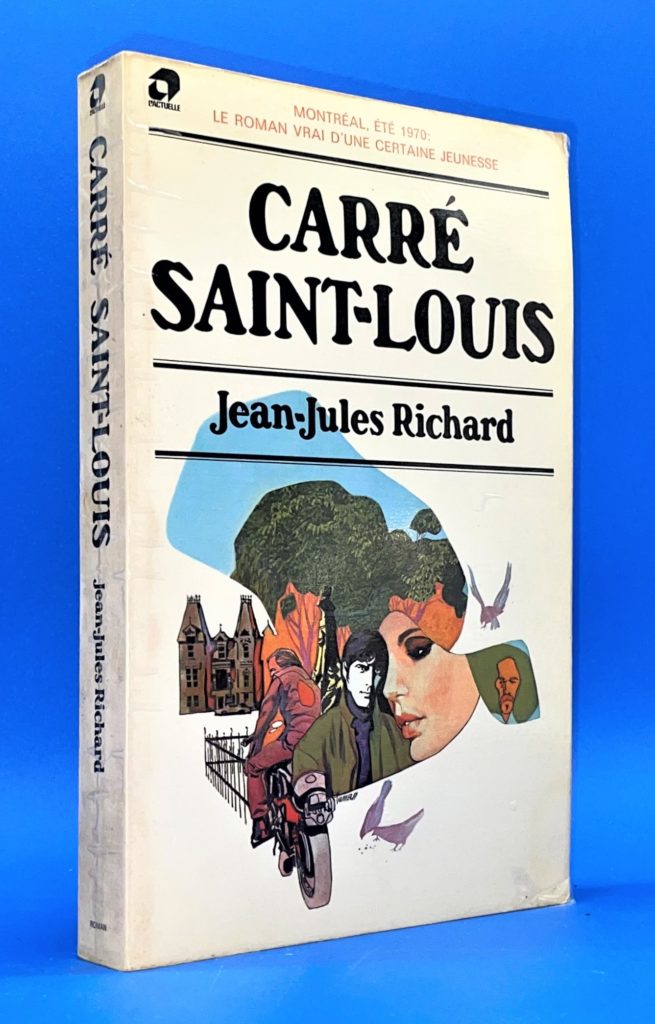
By the early 1970’s, Saint Louis Square had become infamously known as “Village Carré Saint-Louis”. It was Montreal’s pot-smoking central, with hippies, artists and riff-raff filling up the park in the warmer months.
It was an endless party of guitar-strumming, chilling out, and weed-smoking. The joke at the time was that there was a permanent cloud of marijuana floating over “Village Carré Saint-Louis”.

Some of the local residents objected to what they saw as the deterioration of a once respectable, bourgeoise neighborhood. They worried, for example, that the hippies would vandalize the magnificent bust of Octave Crémazie.
Because the monument was considered sacred by an elite of Quebec nationalists, in 1972 an executive committee authorized its move to Place Crémazie. This derelict patch of grass was located right beside the elevated Met or Highway 40 (at the corner of Crémazie and Saint-Laurent boulevards), far away from the hippie invasion of Saint Louis Square.
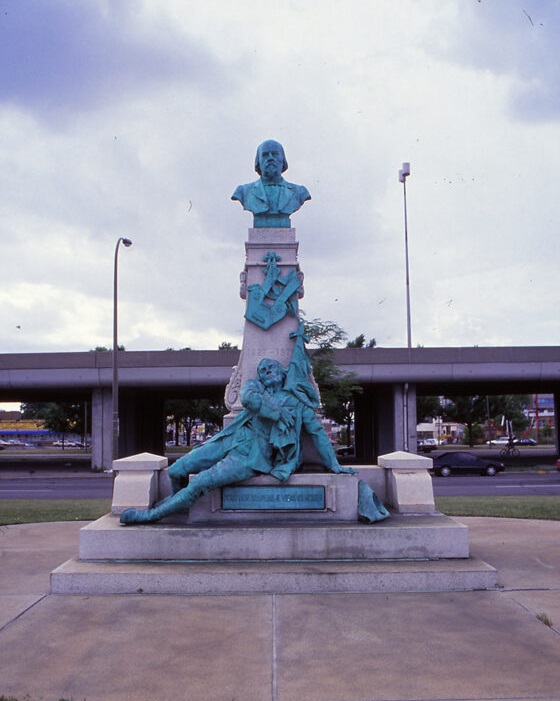
By the early 1980s, the area had deteriorated again. It was now full of violent drug dealers, pimps and underage prostitutes. Due to the design of the roads surrounding the square, clients could drive endlessly around Saint Louis Square until they could find whatever vice they were looking for.
When the city changed the road direction to make it impossible for drivers to do this, things began to slowly change as pushers and pimps moved to more easily accessible locations.

Gentrification began to set in during the late 1980s as the rooming homes were purchased and re-converted into their original Victorian design.
With the increasing gentrification, in 2002 city officials ruled that the bust of Crémazie could return to Saint-Louis Square.
Just three years later, officials installed a second literary bust, this time of Émile Nelligan, Quebec’s most well-known poet today. It was unveiled in the south-west corner of the square on June 7, 2005, not far from his former home on Laval Street.
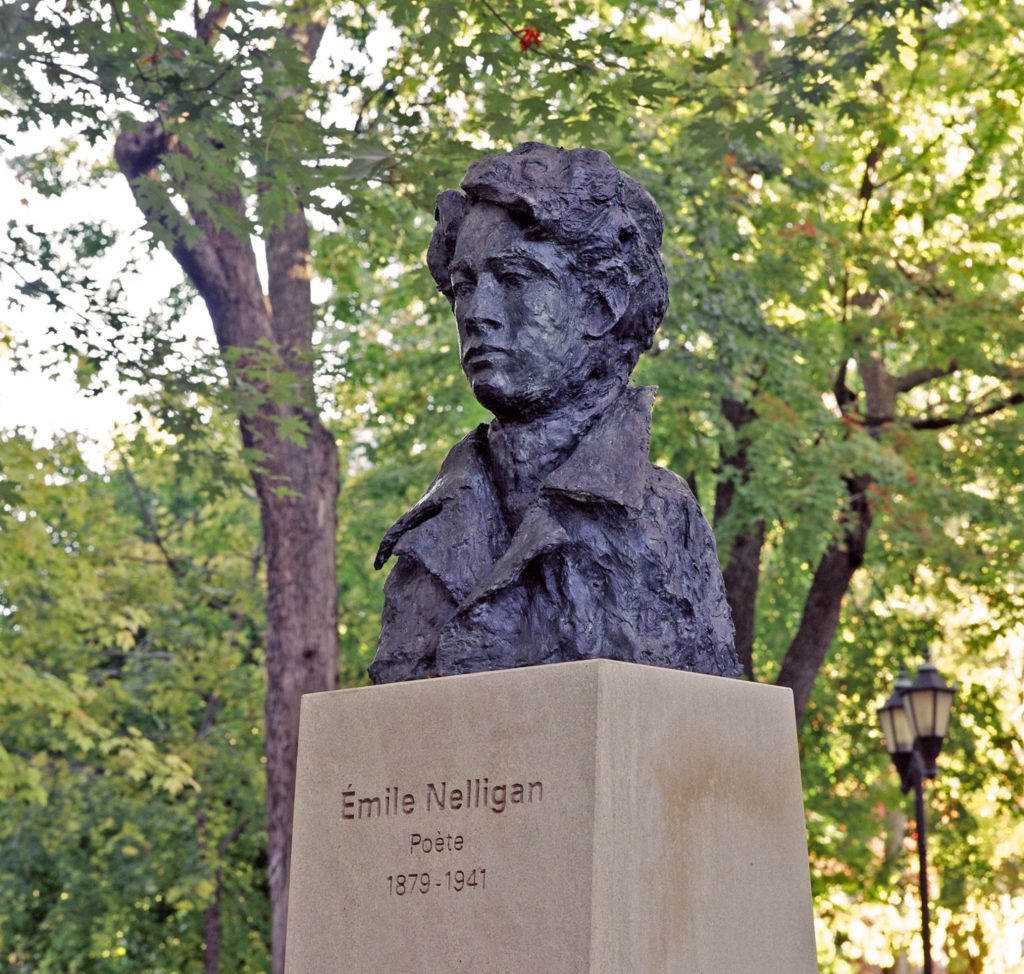
In December of the same year, the Project for Public Spaces described Saint Louis Square as “the closest thing to a European neighbourhood square you’ll find this side of the Atlantic.”
Today, the square is known as “the poetic soul of Montreal” on account of the many famous artists who lived and worked there. These include, but are not limited to, Michel Tremblay, Gilles Carle, Claude Jutra, Jean-Jules Richard, Jean-Roch Boivin, Gaston Miron, André Gagnon, Gérald Godin, Pauline Julien, Mary Travers Bolduc, Dany Laferrière, Louis Royer, Robert Prénovault and Émile Nelligan.
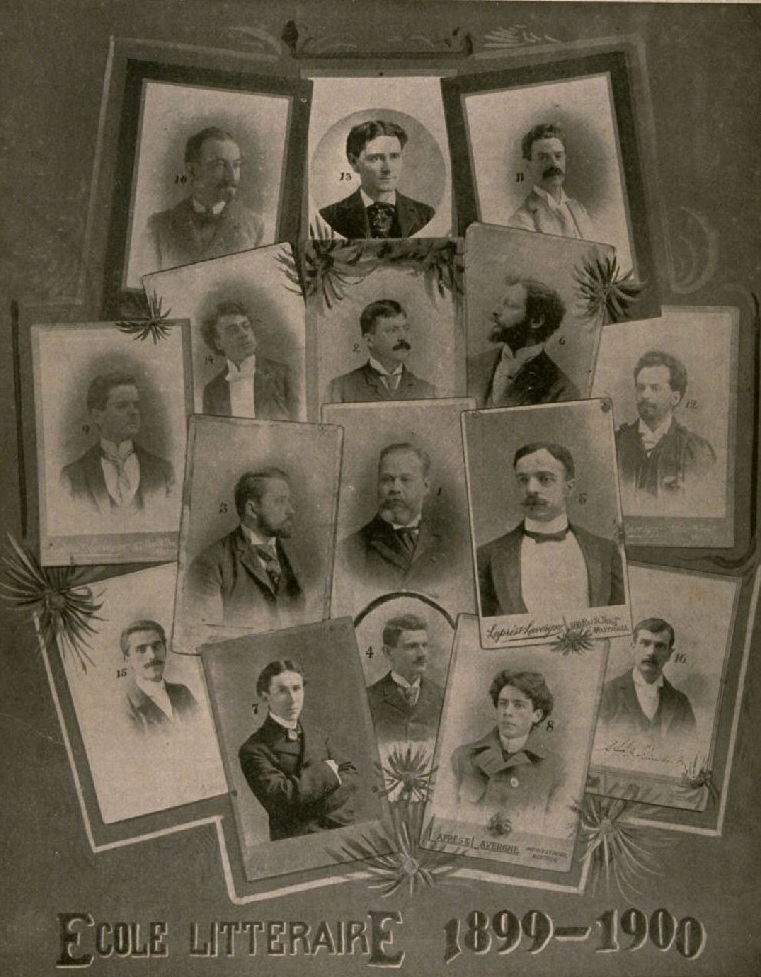
Many of these artists wrote poems, novels, plays and songs in the park. Others painted, took photographs and translated literature and other documents. The deranged spirits allegedly roaming the vicinity have clearly influenced many of their works – and thoughts.
The evidence of the paranormal thoughts of the artists are included in their many songs, poems and novels. Fantastical creatures such as ghosts, cherubs and demons appear in many of their works.
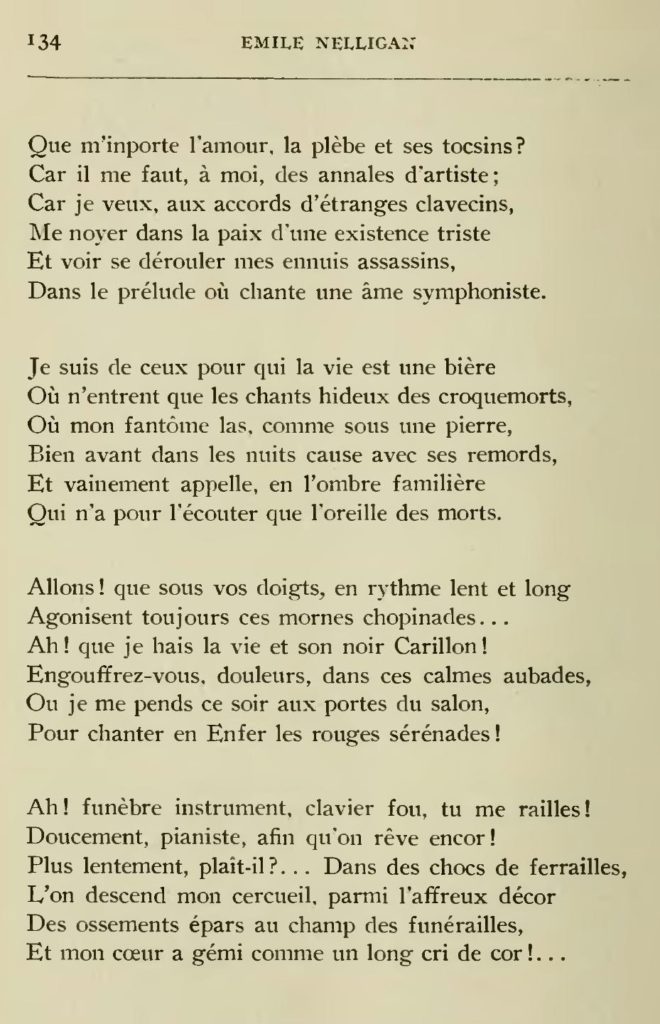
The lives and deaths of many of these artists is explored in the video Carré St-Louis : une histoire populaire (in French).
Two of the most tormented artists to live near the square were poet Émile Nelligan and filmmaker Claude Jutra. There is speculation that the deranged ghost roaming the square is likely the sprit of one of these men.
Born in 1879, Émile Nelligan is considered one of the greatest Quebec poets. His father was Irish and his mother a French Canadian.
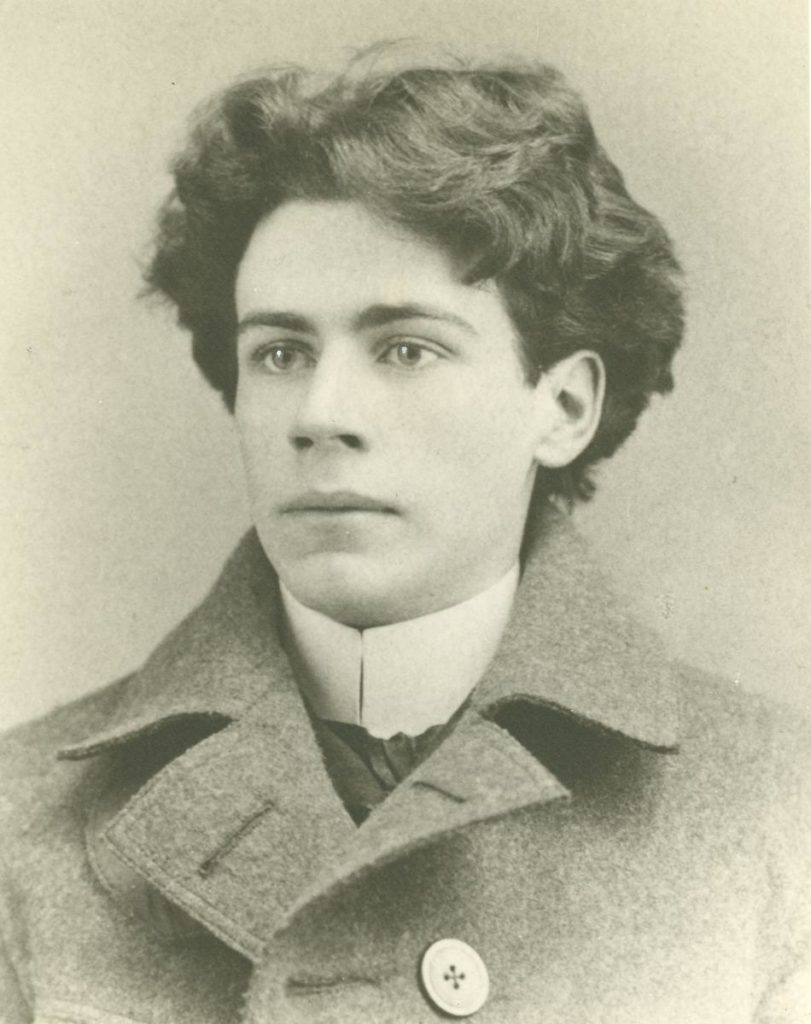
They lived at 3686 Laval Street from1886-1892, then at 3958 on the same street afterwards.
Émile Nelligan was first published at age 16. Writing exclusively in French, he produced an enormous amount of work in four years, including some 170 poems, sonnets, rondels and songs. His literature is characterized by a lyricism overflowing with sadness, nostalgia, extreme sensitivity, inner sorrow and symbols. Unlike the poets who preceded him, Nelligan did not draw his inspiration from his native soil, but rather from his “inner self”.
Unfortunately, on August 9, 1899, Nelligan had a psychotic breakdown. His friend Louis Dantin recalled:
“…Nelligan would lock himself away for whole days, alone with his delirious thoughts, and, in the absence of external excitement, endeavoring to torture the most acute fibers within himself, or else to sing to the surrounding beings, to the walls, to the furniture, to the trinkets that surrounded him, the always sad song of his memories.”
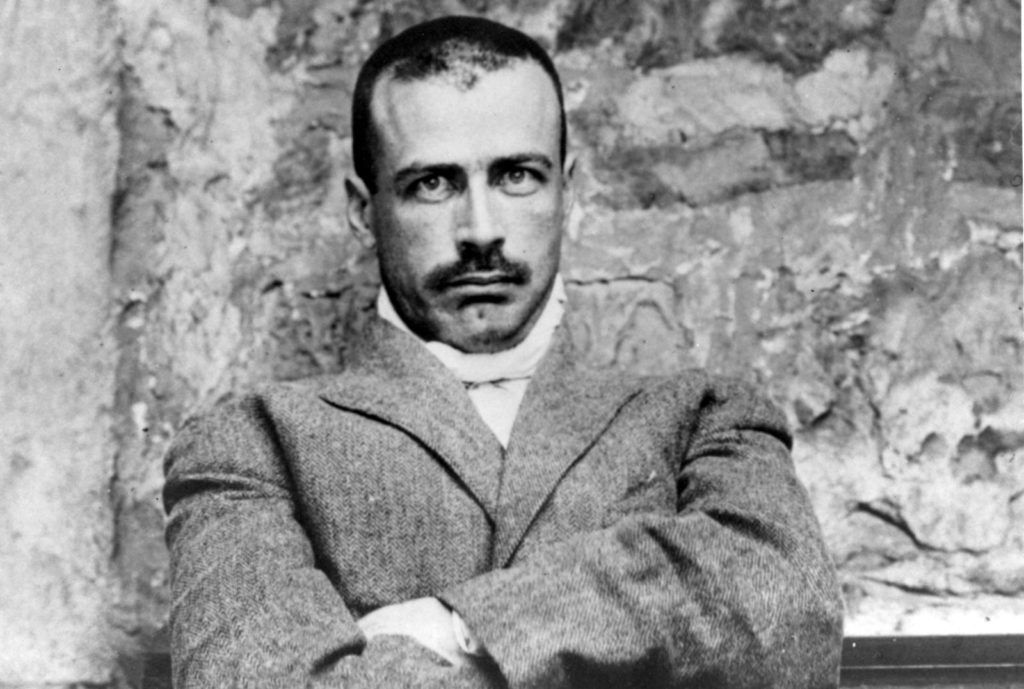
He added: “At night, he had visions, either radiant or horrible: young girls who were at the same time seraphim, muses and lovers, or else enraged specters, ghost cats, sinister demons who breathed despair into him. Each of the dreams took shape the next day in verses penciled with a feverish hand, and where already, among the sparkling features, Madness showed its hideous claws.”
As he became more and more delirious, Nelligan suddenly climbed a tree in Saint Louis Square and refused to come down. His father interned him at the Catholic Saint-Benoît Retreat. In 1925, Nelligan was transferred to the Saint-Jean-de-Dieu Insane Asylum. Rumours circulated that he had been given a lobotomy.

Whatever the case, he remained institutionalized until his death on November 18, 1941. Sadly, following his mental health crisis, he never wrote another word of poetry.
Another tormented artist, Claude Jutra was born on March 11, 1930. A director, writer, actor, editor and cinematographer, he was a central figure in the development of cinema in Québec. He directed two films of tremendous significance to the Quiet Revolution, including the autobiographical À tout prendre (1963) and Mon oncle Antoine (1970). The latter was widely regarded as one of the greatest Canadian films ever made.
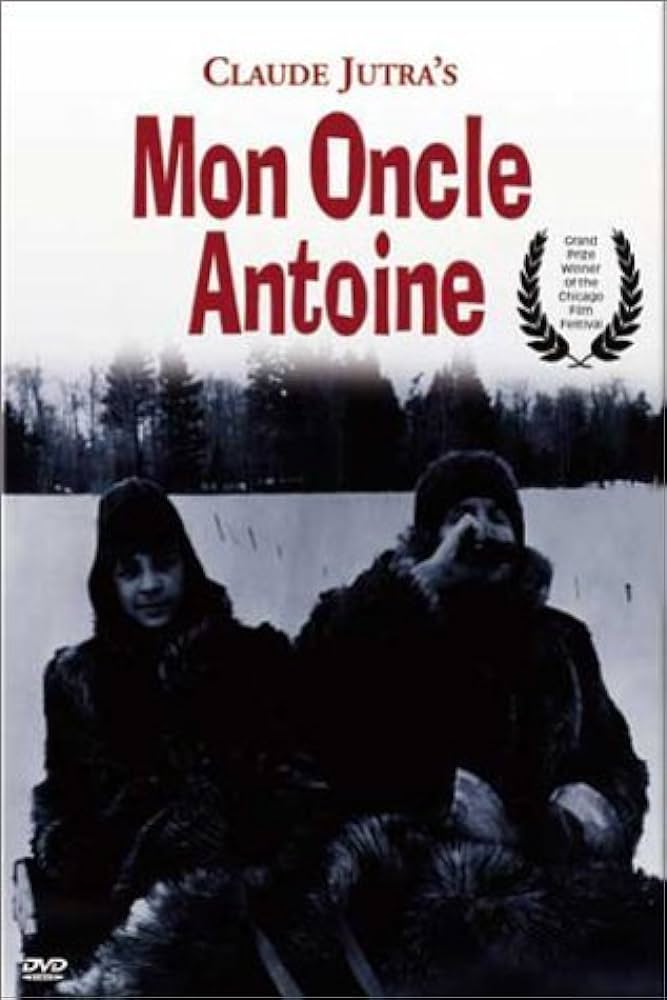
Jutra won several prestigious prizes for his work and was widely celebrated as an icon of Quebec’s francophone culture. He was also honored in queer circles because he was openly gay.
However, on November 5, 1986, Jutra mysteriously disappeared from his home. Given that he had been living for several years with Alzheimer’s disease, there was speculation that he had wandered off. Repeated searches failed to turn up any evidence of his whereabouts.
On April 19, 1987, a bloated body washed up on the banks of the St. Lawrence River at Cap-Santé, near Québec City. The corpse had a note in its pocket reading “Je m’appelle Claude Jutra” (“My name is Claude Jutra”). An autopsy later confirmed drowning as the cause of his death. He had jumped off the infamous Jacques Cartier Suicide Bridge and his body spent the winter frozen in the St. Lawrence River.

L’Union des écrivaines et des écrivains québécois (English: Québec Union of Writers), which was established on March 21, 1977, took up residence in Jutra’s former home. Its stated mission is to promote Québec literature and defend the social and economic rights of people in the literary profession. The location at 3492 Laval Street was seen as ideal given the square’s artistic history.
However, in 2016, Québec society was shocked by allegations that Jutra was a pedophile. Film historian Yves Lever’s biography of Jutra claims that he regularly had sex with boys as young as 14 and 15, and in one case under 14. Those molested included some children of his associates and underage male prostitutes working in Saint Louis Square at night.
When journalists confirmed the story, the reaction was swift. In 2018, the name “Jutra” was scrubbed from street names across Quebec, a Montreal cinema, a park on Prince Arthur Street and Quebec’s most prestigious filmmaking award – the Prix Jutra – the equivalent of the Oscars in French Canada.
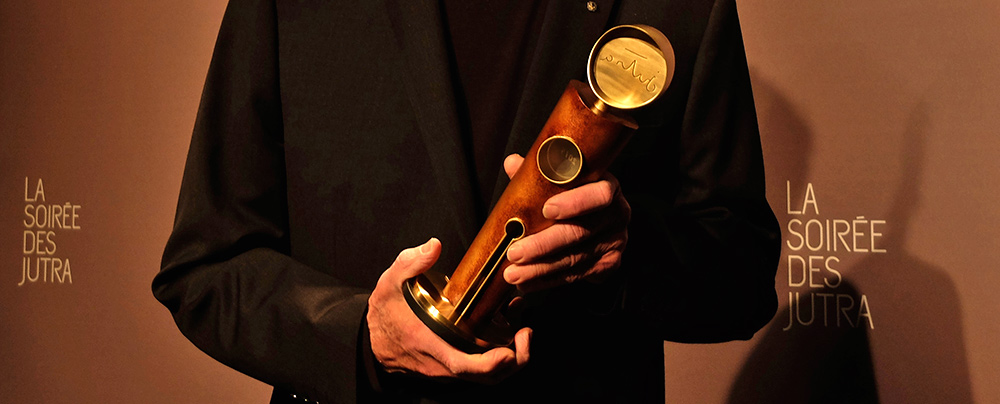
Both Nelligan and Jutra symbolized the tormented artists who lived around Saint Louis Square, which is why many suspect that either of them embody the square’s ghost. However, they are definitely not alone.
Sculptor Robert Prénovault, from St. Boniface, Manitoba, is one example. While he was living in a room near Saint Louis Square, he began installing sculptures of human figures in an abandoned field to the south of the square. Today the area is called Place Gille-Carles and is made up of numerous condos and a heat island.
At the time of Prénovault’s tenure, it was a weed-choked field full of junkies and other undesirables. To combat the scourge, he created deranged sculptures of humanoid creatures to ward off the unwanted. On at least three occasions, the police intervened because concerned citizens thought that dead bodies were lying in the field when in fact they were just sculptures.
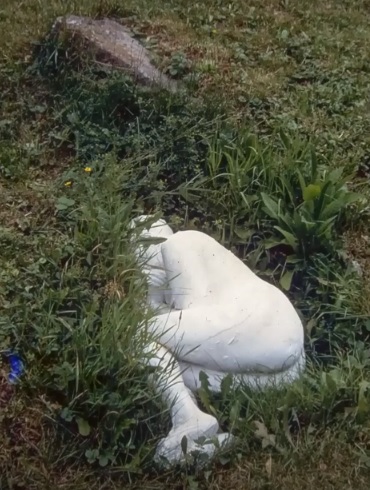
To add insult to injury, Jean-Jules Richard, author of Carré Saint Louis, died in obscurity in Saint Louis Square in 1975.
Since the gentrification of the square, artists have continued to draw inspiration from the park, its creative legacy and ghostly spirits.
For example, arts professors often bring their students to the square for drawing and photography lessons. Also, the Montreal infringement festival frequently used Saint Louis Square for artistic parades and its infamous 2015 “Poetry in the Parc” series.
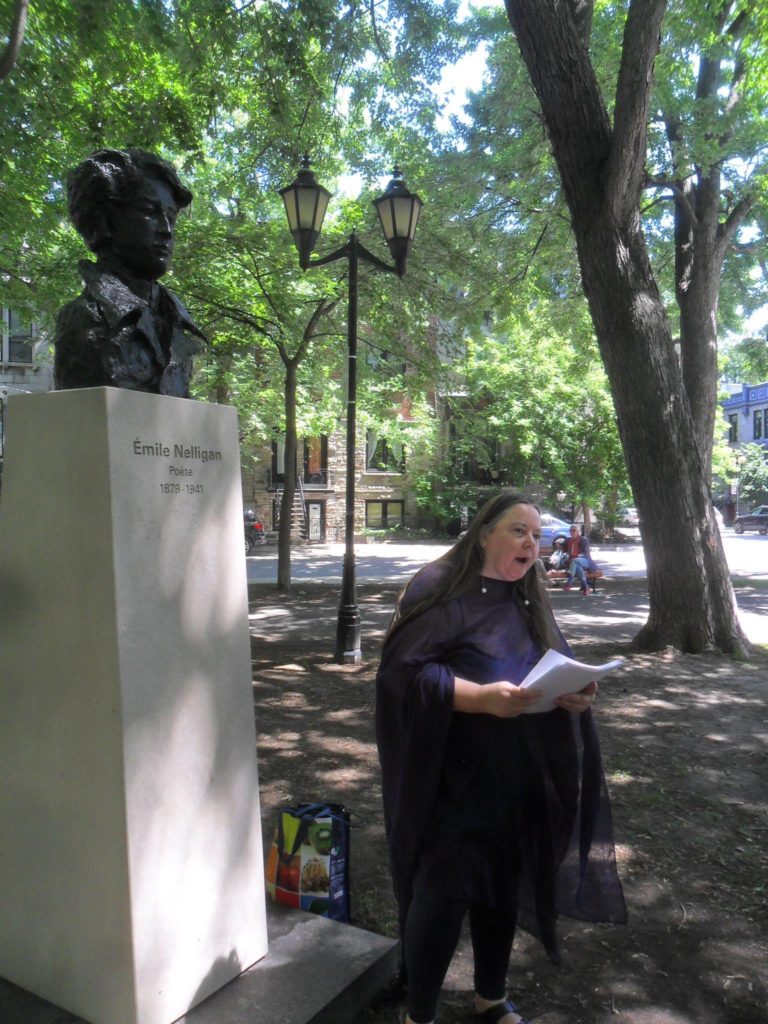
Kirouac & Kodakludo’s wrote a rap song Carré Saint Louis that features ghosts haunting the singers at night.
Even Just for Laughs Gags has used the square as one of it favorite settings for playing pranks on unsuspecting passersby.
Death also continues to stalk artists associated with the square. In March 2023, literary critic Jean-Roch Boivin, who had been living in his studio apartment on Saint Louis Square for 30 years, died of a heart attack. He had been renovicted from his home on the square, the speculated trigger for his death.
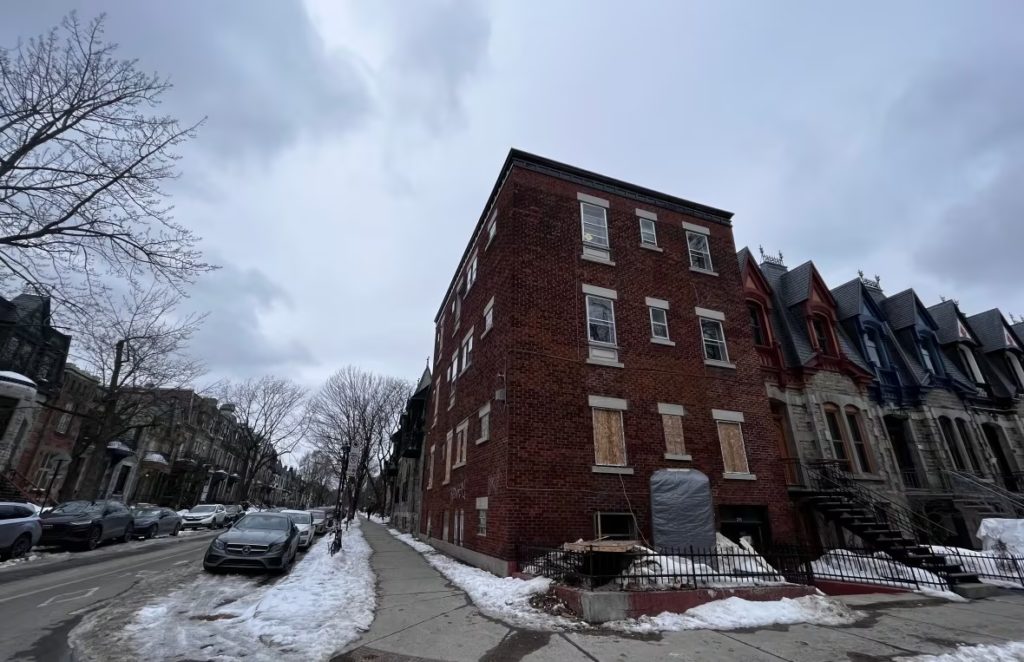
On November 11, a ceremony was held for deceased infringement festival artists at the bust of Nelligan. The celebration of life was held for Rebecca Anne Banks, Oscar Elliot, Roman Fee, David Fennario, Marie-Hélène Henry, E Lloyd MacHardy, Ange-Aimee Woods, Louis Royer, Tim Sentman and others.
During the ceremony, the ashes of poet Rebecca Anne Banks were spread in the garden behind the bust.
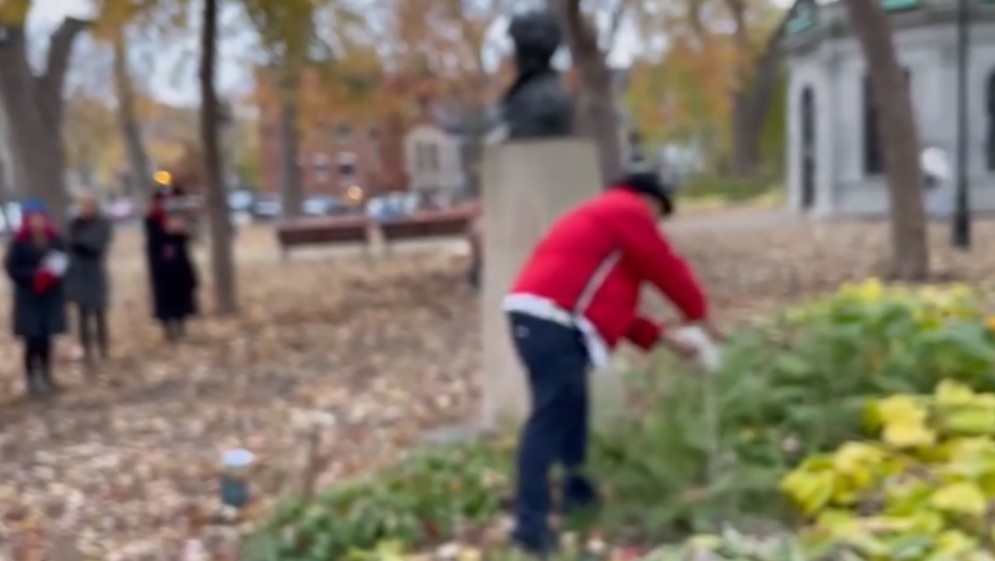
It was her favorite place to recite poetry, after all.
There can be no denying that Saint Louis Square continues to hold a dear place in Quebec’s artistic community and heritage, despite its ghostly spirits. If visiting the square at night, do so at your own risk!
Company News
With Hallowe’en over and the cold winter approaching, Haunted Montreal is entering its Dead Season. Public outdoor tours will return in the spring.
In the meantime, our Haunted Pub Crawl is offered every Sunday at 3 pm in English. For tours in French, these happen on the last Sunday of every month at 4 pm.
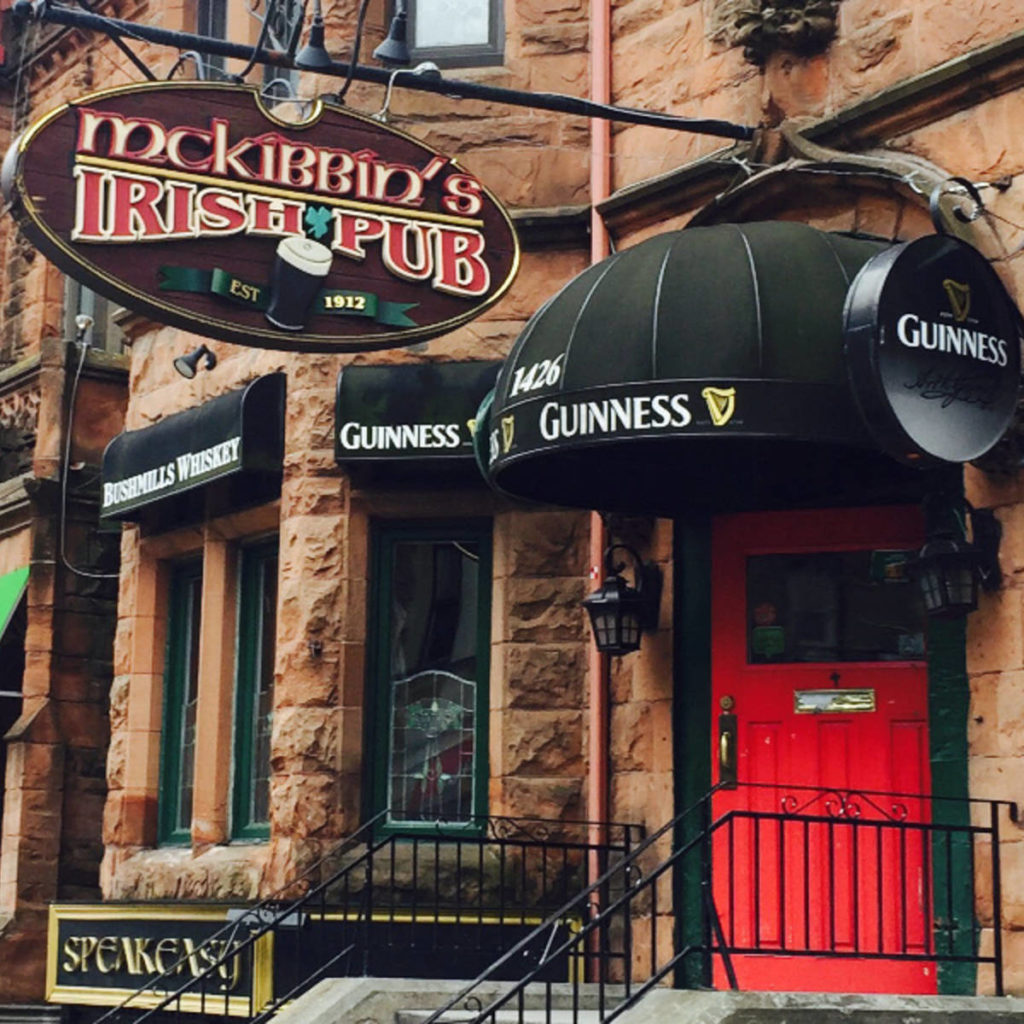
Private tours for any of our experiences (including outdoor tours) can be booked at any time based on the availability of our actors. Clients can request any date, time, language and operating tour. These tours start at $215 for small groups of up to 7 people.
Email info@hauntedmontreal.com to book a private tour!
You can also bring the Haunted Montreal experience to your office party, house, school or event by booking one of our Travelling Ghost Storytellers today.

Hear some of the spookiest tales from our tours and our blog told by a professional actor and storyteller. You provide the venue, we provide the stories and storyteller. Find out more and then contact info@hauntedmontreal.com
Our team also releases videos every second Saturday, in both languages, of ghost stories from the Haunted Montreal Blog. Hosted by Holly Rhiannon (in English) and Dr. Mab (in French), this initiative is sure to please ghost story fans!

Please like, subscribe and hit the bell!
In other news, if you want to send someone a haunted experience as a gift, you certainly can! We are offering Haunted Montreal Gift Certificates through our website and redeemable via Eventbrite for any of our in-person or virtual events (no expiration date).
Finally, we have an online store for those interested in Haunted Montreal merchandise. We are selling t-shirts, magnets, sweatshirts (for those haunted fall and winter nights) and mugs with both the Haunted Montreal logo and our tour imagery.
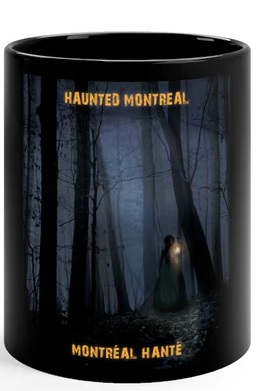
Purchases can be ordered through our online store.
Haunted Montreal would like to thank all of our clients who attended a ghost walk, haunted pub crawl, paranormal investigation or virtual event!
If you enjoyed the experience, we encourage you to write a review on our Tripadvisor page and/or Google Reviews, something that really helps Haunted Montreal to market its tours.

Lastly, if you would like to receive the Haunted Montreal Blog on the 13th of every month, please sign up to our mailing list.
Coming up on December 13: Nips Daimon
In 1862, author C.E. Bockus penned a ghost story set in Montreal called “Nips Daimon”. Published in London in the May edition of Once a Week, the creepy tale features a Mount Royal tobogganer named Eugene Roy and his misadventures with an undead spirit. Based on the true ghost story of Simon McTavish and his haunted castle, “Nips Daimon” adds another dimension to the deranged legacy of the forgotten fur baron. Known to toboggan down the mountain slopes in his coffin at night, McTavish’s ghost allegedly terrorized city residents in the 1800s. The McTavish tale is widely considered “Canada’s Legend of Sleepy Hollow” and C.E. Bockus’ fictionalized version adds to its mystery and intrigue.
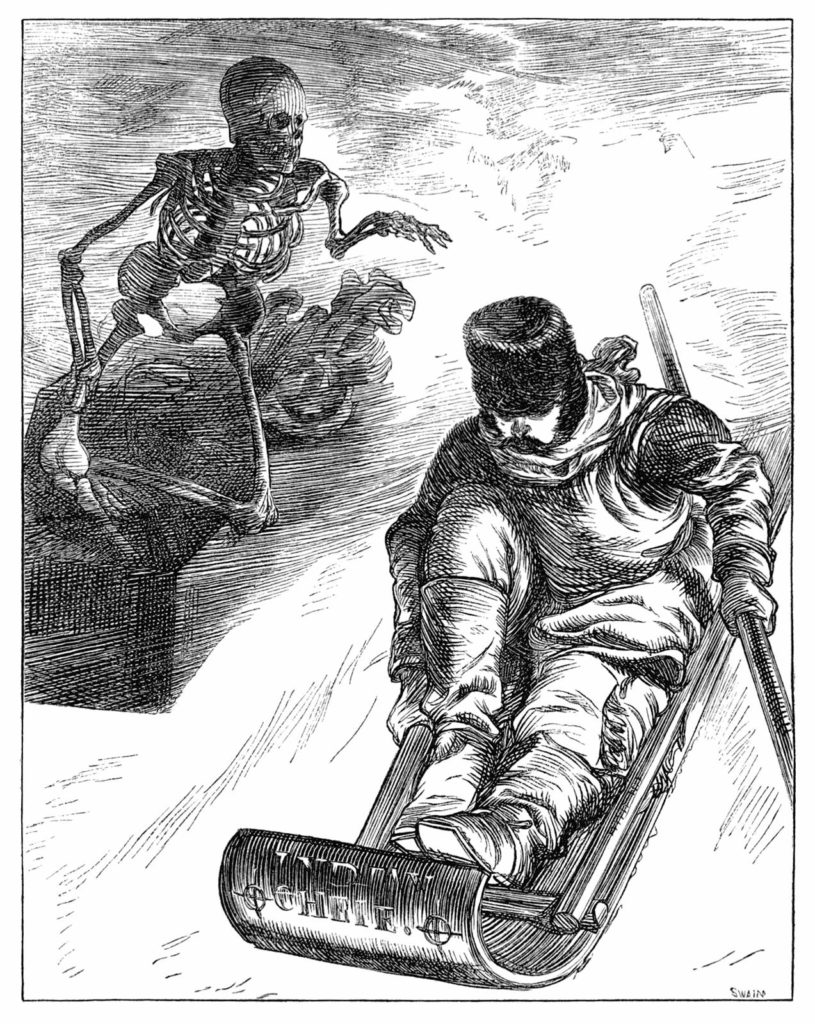
Author:
Donovan King is a postcolonial historian, teacher, tour guide and professional actor. As the founder of Haunted Montreal, he combines his skills to create the best possible Montreal ghost stories, in both writing and theatrical performance. King holds a DEC (Professional Theatre Acting, John Abbott College), BFA (Drama-in-Education, Concordia), B.Ed (History and English Teaching, McGill), MFA (Theatre Studies, University of Calgary) and ACS (Montreal Tourist Guide, Institut de tourisme et d’hôtellerie du Québec). He is also a certified Montreal Destination Specialist.
Translator (into French):
Claude Chevalot holds a master’s degree in applied linguistics from McGill University. She is a writer, editor and translator. For more than 15 years, she has devoted herself almost exclusively to literary translation and to the translation of texts on current and contemporary art.




A very Brilliant Read and so informative. Great writing and historically fascinating. My congradulations
In the 1980s and 90s there were a few after-hours spots around there as well.